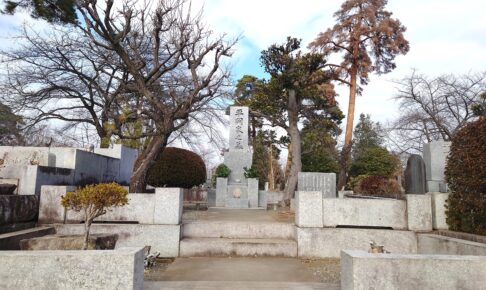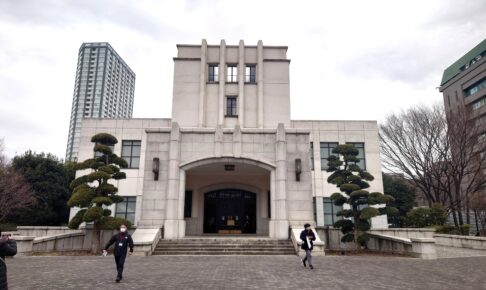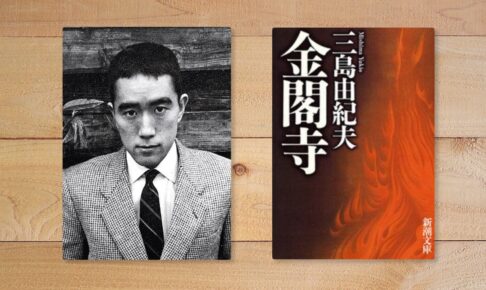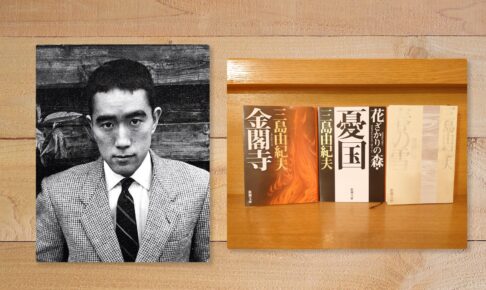Emile Zola's "Paris" Synopsis and Comments - From Lugon McCall to Beyond! This is Zola! How does a serious confrontation with religion end!
I would like to introduce "Paris" published by Emile Zola in 1898. I read "Paris" translated by Nozomi Takenaka and published by Hakusuisha in 2010.
Let's take a quick look at the book.
A long-awaited new translation of an unknown masterpiece!
Paris at the end of the 19th century is a city where politics is corrupt, anarchy and terrorism are rampant, the bourgeoisie is thriving, and the workers are destitute. Overlooking the city of vice and contradiction, the construction of the Sacré-Coeur temple is proceeding at a rapid pace on the hill of Montmartre. There, there is a priest, Pierre, who has lost his faith and his soul is wandering. One day, while he is busy helping the poor, he witnesses an explosion at the baron's mansion. Somehow, his brother Guillaume, a chemist, is at the scene.AmazonProducts Page.
Nana."Izakaya."Zola (1840-1902) is known in Japan as a naturalistic literary writer, but he was also a journalist and keen urban observer, and his 20-volumeThe Lugon-McCall Series.In "The Three Cities," he was one of the first to introduce post-industrial modernity, including railroads, department stores, and stock exchanges, and to depict the truth of the people who lived there. This book is part of the "Three Cities" series, which depicts the capital city after the Second Empire, which underwent even more dramatic changes. The charm and modernity of the novels of Zola, France's most widely read classic author, will be easily understood once you have read this book.
This work has been introduced in the previous two previous editions.Lourdes., ,Rome.and "Paris" will be the final work in the "Three Cities Twins" series.
As I mentioned in the article above, unfortunately "Lourdes" and "Rome" have not been translated into Japanese.
However, as was the case with the "Lugon Makkar Series," each of Zola's works is a complete work in its own right and can be enjoyed more than adequately even if one work is read alone. The famousIzakaya.", ,Nana.", ,Geluminaire."The "Lugonmakkar Series" is part of the 20-volume "Lugonmakkar Series," but each of these works continues to be loved as stand-alone pieces, which is also evident in the fact that each of these works is also loved as a stand-alone work.
Now, we will take a look at the translator's afterword, which summarizes this work in an easy-to-understand manner. It is a very useful explanation of the flow of the "Three Cities" series, so I will read it carefully, even though it will be a little long.
From "Lugon McCall" to "Paris" in "Three Cities," vol. 3.
When one thinks of Paris as depicted by the author of this book, the Paris of the "Lugon-Macquart" series (1871-93, 20 volumes) comes to mind. In each volume, Zola mainly shed light on a section of Parisian life, a certain district of Paris, or a certain social stratum, creating a panorama of Paris in the latter half of the nineteenth century. Thus, Zola has spent the first two decades of the Third Republic and the preceding two decades of the Second Empire depicting French society and Paris.
In September 1991, prior to the completion of the book, Zola and his wife, Alexandrine, traveled through the Pyrenees and Basque Country, where they visited the pilgrimage site of Lourdes for the first time. He then decided to write a trilogy, including two novels about Rome and Paris, as a series of novels to be published after the book series, and the final volume of the "Three Cities" was "Paris" (published in 1898. The final volume of the "Three Cities" was Paris (published in 1898; the first volume, Lourdes, was published in 1894, and the second volume, Rome, in 1896).
The Paris that emerges from "Lugon Macquardt" is the Paris of one or two decades before the time of writing, and each volume depicts a different aspect of Paris: the stock exchange, the banks, the central market, the department stores, the working class districts, the high bourgeois families, the world of high prostitution, and so on. On the other hand, "Paris" tells of events that occurred very recently, during the period of writing (December 1896 to August 1997) or two, three, or at most five years before that (in short, during the production of the serial work "Three Cities"), and in this volume, the upper part is a story of political events, from the fallen aristocrats and the bourgeoisie to the poor. In addition, in this one volume, the characters of Paris are extremely numerous and diverse, from the fallen aristocrats and the grand bourgeoisie to the poor, politicians, bourgeois, ex-military, judicial officers, clergy, newspaper reporters, scientists, artists, actresses, students, craftsmen, workers, etc., presenting a truly complete picture of the city.
For readers at the time of publication, this means a complete picture of the Paris of today, the Paris of their own lifetime, and for us, the readers of the 21st century, a complete picture of the Paris of about a hundred years ago.
In "Three Cities," set in the three cities of Lourdes, Rome, and Paris at the end of the century, Pierre Froment, a young priest who doubts his own faith in the face of the miserable state of the world, struggles to find a true religion that can save the world, and finally finds a new religion to replace Christianity, a religion of truth and justice based on labor and science. He finally discovers a new religion to replace Christianity, a religion of truth and justice based on labor and science.
Pierre goes first to Lourdes and then to Rome in an attempt to regain his faith, but his anger and disappointment with the Catholic Church causes him to lose it all over again. Returning to Paris, he finds himself an atheist, albeit in vestments, and is plagued by a sense of despair as he is exposed to the reality of the inescapable misery of the extremely poor, the vices of the powerful and wealthy, and the corruption of the Church.
However, after visiting his brother Guillaume, a chemist, in his house on the hills of Montmartre, and getting to know Marie, a young woman who lives there, he became convinced that solid daily work, a healthy life with a healthy body, simple love, and science can transform society, save people, make them happy, and bring about truth and justice. and bring about truth and justice.
The reader can explore the reality of Paris at the end of the century by following in the footsteps of Pierre, whose position as a priest brought him into contact with all classes of Parisian society, from the political, business, and social worlds to the working class.
Hakusuisha, Emile Zola, translated by Nozomi Takenaka, Paris, vol. 2, p. 355-356
Some line breaks have been made.
Paris" is the culmination of Zola's work on the "Lugon McCall Series. It is a work that is full of Zola's character, and one might be tempted to call it "THE Zolaism.
And as the above commentary explains, in the "Lugon McCall Series," we took a closer look at each of these classes of people, and now in "Paris," they are all brought together in this one story. This is spectacular. Read more...Nana."Target, here.Geluminaire."I guess so, huh?"A Share of the Prey."indicates such things as location of person or thing, location of short-term action, etc.Gold."The story is a must for Zora fans.
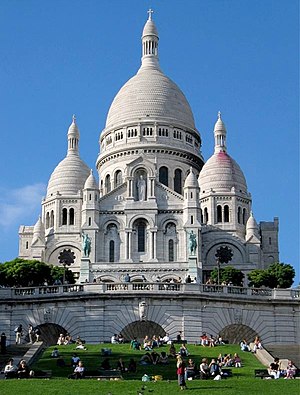
The Sacré-Coeur, a huge cathedral standing in Montmartre, Paris, is of great significance in this story.
Although this is a relatively new church, with construction having begun in 1877, Zola has no mercy on this building. He is unrelenting in his criticism of the building, saying, in the words of the characters in the film, "This cathedral is a symbol of the corruption of Paris and of the church.
So why is Zola so critical of this church?
That was precisely because of the religious issues that continued the trend from the "Twins of the Three Cities," "Lourdes" and "Rome," which have been discussed up to this point.
Zola was originally a big believer in scientific thinking and frequently criticized Catholicism in his "Lugon Maccarr Series".
However, Zola visited Lourdes in 1891 and was shocked by the "Miracle of the Fountain of Lourdes," which led him to consider what true religion is and what can guide people. For more information on this process, please refer to the previous articleSynopsis and Thoughts on Zola's Untranslated Work "Lourdes" - How did Zola, who values scientific analysis, view the "Miracle of the Fountain of Lourdes?"The Sacré Coeur temple became an unacceptable symbol of depravity in Zola's eyes as a result of his religious quest.
This beautiful, huge church was and still is a tourist attraction in Paris. I wonder how many tourists see this church from that perspective. I will be visiting this very church in the near future. I am looking forward to seeing what I will think when I see this church as a "Zoraist".
And I feel it was very significant to be able to read this work now at this time.
This is because, in this work, thefourierandProudhonThe names of various socialists and revolutionaries, such as I honestly knew almost nothing about these people two years ago when I was reading the "Lugon McCall Series".
But I have been studying Marx's thought and historical background for the last year. Also on this blog."Learning from the Lives and Thought Backgrounds of Marx and Engels."We have been updating our article on the theme of "The Socialist Movement," and have been learning about the movements and backgrounds of these socialist thinkers and revolutionaries.
Reading "Paris" with this background in mind, I think I was able to feel more of the "pressing thoughts" of thinkers and revolutionaries.
In this work, Zola depicts a man who espouses socialist ideals and commits random acts of terrorism. In this work, we take a close look at why they do what they do and what society looks at in response. I found this very interesting.
Now that we have discussed this work, "Paris" is a masterpiece. It is a masterpiece that can be called the "crystallization of Zolaism," in which the true essence of Zola is fully demonstrated.
'Izakaya' or 'Nana',The Earth.It is not a harsh work with no redeeming qualities such as The last is that final volume of the "Lugon Makkar Series".Dr. Pascal."Zola's positive view of humanity is described as follows.
The film does indeed speak of the disgrace of Paris. Political corruption, media brutality, bourgeois deception, family breakdown, religious corruption, powerlessness, and so on, Zola's signature exposés follow one after another. It is easy to see how angry Zola was about the society of his time. For a man who valued justice, the corruption of the time must have been unbearable.
But instead of sinking into despair, he wants to somehow find hope and purpose in life. This struggle and quest is told in "Paris. Paris" seems to me to be Zola's "duel with life" and a serious battle.
After writing a huge 20-volume novel series called "The Lugonmacchar Series," I immediately began work on the "Three Cities Twins." I think it is very significant that you chose Pierre, a clergyman, to be the protagonist of these twin books.
I am also a monk and a religious person. I cannot make a general statement about the faith of Christianity and the faith of us monks, as they are completely different in substance and meaning, but as a fellow religious, I found it very thought-provoking. In a sense, I was even surprised that Zola, who is not a religious person, was able to so deeply penetrate the "psychology of a clergyman who is troubled by his faith.
In that aspect, I think this work is very significant for Zola fans. I highly recommend this work to those who have not had much contact with Zola. This work can be enjoyed on its own without any problems at all, so please read it.
One last thing. This is something I would very much like to ask you to do.
Can you please manage to publish "Lourdes" and "Rome" in Japanese!
After reading such a masterpiece, I couldn't wait to read its foreground, "Lourdes" and "Rome"! Just looking at these synopses and summaries, you can smell the aroma of a great book.
The experience in Lourdes that inspired me to write the "Three Cities Twins," including "Paris," and my thoughts in Rome that developed from that experience. And my thoughts in Rome, which developed further from there.
This is something that Zola fans would love to know. I hope that you will publish this "Three Cities Book" in Japanese, which will reveal this information.
I feel that Zora is exactly what Japan needs today.
Perhaps no other writer has analyzed the workings of society as dispassionately as Zola and sought justice and truth.
Film about the Dreyfus AffairOfficer and Spy."has been released and interest in Zora is growing, now is the time to take advantage of this opportunity.
Please, please, please translate "Lourdes" and "Rome" into Japanese!
Paris" is the best work I've ever seen. It made me love Zola even more. I hope it will spread to many people.
This is the "Emile Zola's "Paris" Synopsis and Impressions - From Lugon McCall to Beyond! This is Zola! How does a serious confrontation with religion end?" The above is the summary of Emile Zola's "Paris" and my impression of it.
Click here to read the previous article.
Related Articles





















